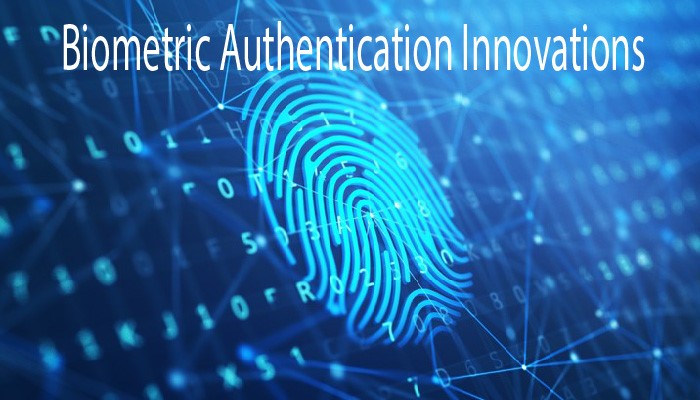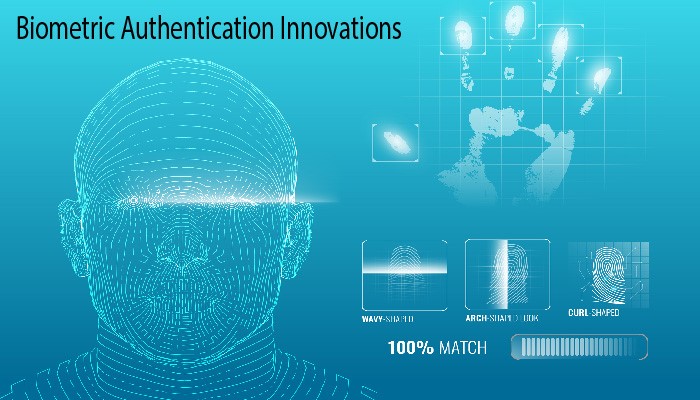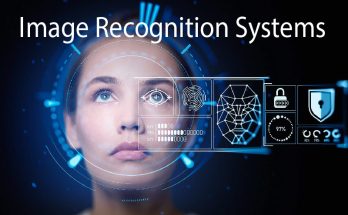Trending Biometric Authentication Innovations
Welcome to the exciting world of trending biometric authentication innovations! In today’s rapidly evolving digital landscape, traditional passwords are no longer secure enough to protect our sensitive information. Biometric technology offers a cutting-edge solution by leveraging unique physical and behavioral characteristics for identity verification. Let’s explore the latest trends in biometric authentication and how they are revolutionizing security measures across various industries.

Types of Biometric Authentication
When it comes to biometric authentication, there are various types that offer secure and reliable ways to verify identities.
One common type is fingerprint scanning, which analyzes unique patterns on an individual’s fingertips for access control. This method is widely used in smartphones and laptops for quick and convenient verification.
Another popular type is facial recognition technology, which captures and analyzes facial features like the distance between eyes or shape of the nose to grant access. It is commonly utilized in airports for immigration checks and by social media platforms for photo tagging.
Voice recognition technology is also gaining traction, using voice characteristics such as pitch and tone to authenticate users. This type of biometric authentication is often deployed in call centers for customer verification purposes.
Iris scanners are another innovative form of biometric authentication that scans the intricate patterns in a person’s iris to confirm identity accurately. This advanced technology is commonly seen in high-security facilities like government buildings.
Heartbeat monitoring systems are emerging as a cutting-edge biometric authentication method that measures unique heart rate patterns for identification purposes. This non-invasive technique offers a seamless way to authenticate individuals without physical contact.
Advantages and Challenges of Biometric Authentication
Biometric authentication offers a range of advantages in enhancing security measures. One key benefit is the uniqueness of each individual’s biometric data, making it difficult for impostors to replicate or steal identities. This technology provides a convenient and efficient way for users to access devices or systems without the need to remember complex passwords.
However, challenges such as privacy concerns and potential data breaches remain prevalent. Biometric information, once compromised, cannot be changed like passwords can be reset. There is also an ongoing debate regarding the ethical implications of collecting and storing personal biometric data.
Despite these challenges, advancements in biometric authentication continue to evolve with improved accuracy and efficiency. As technology progresses, addressing these challenges will be crucial in ensuring that biometric authentication remains a secure and reliable method for identity verification.
Top 5 Biometric Authentication Innovations
Biometric authentication has revolutionized the way we secure our devices and data, with cutting-edge innovations constantly pushing boundaries. Here are five top biometric authentication technologies leading the pack.
Facial recognition technology stands out for its convenience and accuracy in verifying identities through unique facial features. It’s like unlocking your device with just a glance!
Voice recognition technology utilizes vocal patterns to authenticate users, offering a seamless and hands-free experience. Your voice becomes your password.
Fingerprint scanners remain a popular choice for their reliability and ease of use. Simply touch the sensor to unlock your device or authorize transactions effortlessly.
Iris scanners take security up a notch by scanning the intricate patterns in your iris to grant access. It’s like something out of a sci-fi movie, but it’s real!
Heartbeat monitoring systems are on the rise, using individuals’ unique heart rhythms as an additional layer of security. Your heartbeat becomes your digital signature!
A. Facial Recognition Technology
Facial recognition technology has taken the world by storm, offering a secure and convenient way to authenticate users. By analyzing unique facial features such as the distance between eyes or shape of the nose, this innovation ensures accurate identification.
One of the key advantages of facial recognition is its non-intrusive nature – no need to remember passwords or carry physical tokens. Simply look at the camera, and you’re in! This seamless experience makes it a popular choice for various industries, from banking to smartphone security.
However, challenges like privacy concerns and potential bias in algorithms have sparked debates. Despite these issues, continuous advancements in AI are enhancing accuracy and reliability. As this technology evolves, we can expect even more sophisticated applications across different sectors.
B. Voice Recognition Technology
Voice recognition technology is making waves in the world of biometric authentication. By analyzing unique vocal patterns, this innovative system verifies a person’s identity with precision and speed.
Imagine simply speaking a passphrase to unlock your device or access sensitive information – it’s like something out of a sci-fi movie! Voice recognition technology offers convenience and enhanced security, as each person’s voice is distinct and cannot be easily replicated.
This cutting-edge technology is not just limited to unlocking smartphones anymore; it is being integrated into various industries such as banking, healthcare, and even smart home devices. With the advancements in machine learning algorithms, voice recognition systems are becoming more accurate and reliable than ever before.
The future holds endless possibilities for voice recognition technology – from personalized customer service experiences to seamless hands-free interactions with our devices. Embracing this innovation can lead us towards a more secure and efficient digital future.
C. Fingerprint Scanners
Fingerprint scanners are one of the most widely used biometric authentication methods in today’s tech-savvy world. The unique patterns found on each person’s fingertips provide a secure and convenient way to verify identity. By capturing the ridges and valleys of a fingerprint, these scanners create a digital representation that is nearly impossible to replicate.
The technology behind fingerprint scanning has evolved significantly over the years, becoming faster and more reliable than ever before. With advancements in sensor accuracy and algorithm efficiency, false acceptance rates have drastically decreased while security levels have increased.
One of the key advantages of fingerprint scanners is their ease of use – simply place your finger on the sensor, and within seconds, you can gain access to your device or authenticate a transaction. This seamless experience makes fingerprint authentication ideal for various applications such as unlocking smartphones, accessing secure buildings, or authorizing payments.
Moreover, fingerprint scanners offer an added layer of security compared to traditional password-based systems since fingerprints are unique to each individual. This uniqueness not only enhances security but also eliminates the need for users to remember complex passwords that can be forgotten or compromised easily.
With continuous innovation driving improvements in accuracy and speed, fingerprint scanners remain at the forefront of biometric authentication technologies. Their widespread adoption across industries showcases their effectiveness in providing secure and user-friendly identity verification solutions.
D. Iris Scanners
Imagine a world where your eyes are the key to unlocking doors, accessing devices, and verifying identities. With iris scanning technology, this futuristic scenario is becoming a reality. Iris scanners capture the unique patterns in an individual’s eye, providing highly secure biometric authentication.
The intricate details of the iris make it one of the most accurate biometric identifiers available today. By simply looking into a scanner, users can swiftly and effortlessly authenticate their identity without the need for physical contact.
Iris scanners are being integrated into various sectors, from government agencies enhancing border security to businesses safeguarding sensitive information. The speed and accuracy of iris recognition make it a valuable tool in preventing unauthorized access and fraud.
As advancements continue to refine this technology, we can expect even more seamless integration into our daily lives. From securing our smartphones to protecting confidential data, iris scanners offer unmatched precision in biometric authentication.
E. Heartbeat Monitoring Systems
Heartbeat monitoring systems are a cutting-edge innovation in biometric authentication. By utilizing the unique patterns of an individual’s heartbeat, this technology offers a secure and convenient way to verify one’s identity. The rhythm of your heart becomes your password, making it nearly impossible for unauthorized users to gain access.
With the rise of wearable technology, heartbeat monitoring systems can be seamlessly integrated into smartwatches or fitness trackers. This allows for continuous authentication without any extra effort on the user’s part. Imagine unlocking your device or accessing sensitive information simply by wearing a device that monitors your heartbeat – it’s like something out of a sci-fi movie!
The accuracy and reliability of heartbeat monitoring systems make them ideal for various applications beyond just unlocking devices. From securing online payments to enhancing healthcare services, the potential uses are vast and exciting. As technology continues to evolve, we can expect even more innovative ways to leverage this biometric authentication method in our daily lives.
Potential Applications and Benefits of Biometric Authentication Innovations
Biometric authentication innovations have opened up a world of possibilities in various industries. One significant application is in the healthcare sector, where patient identification through biometrics ensures accurate and secure access to medical records. This not only streamlines processes but also enhances patient privacy and reduces the risk of identity theft.
In the banking and financial sector, biometric authentication helps combat fraud by providing a more secure method for verifying transactions. With fingerprint scanners or facial recognition technology, users can securely access their accounts without the need for traditional passwords that can be easily compromised.
Moreover, biometric innovations are revolutionizing travel security at airports and border crossings. By using iris scanners or facial recognition systems, authorities can efficiently screen passengers while ensuring a seamless experience for travelers.
The benefits of biometric authentication innovations extend beyond convenience; they enhance security measures across various sectors, paving the way for a safer and more efficient future.
Controversies Surrounding Biometric Authentication
Biometric authentication has sparked debates regarding privacy and security concerns. One major controversy surrounds the storage of sensitive biometric data, raising worries about potential breaches and misuse by unauthorized parties. Critics argue that once compromised, biometric information cannot be changed like passwords or PINs, posing a significant risk to individuals.
Moreover, there are fears of mass surveillance through the widespread adoption of biometric systems in public spaces. Questions on consent and transparency in collecting biometric data have also been raised, with skeptics highlighting the potential for coercion or exploitation. Additionally, issues related to accuracy and reliability have been brought up, as false positives or negatives could result in denied access or wrongful identification.
The evolving nature of technology adds another layer to these controversies, with concerns over algorithm bias and discrimination based on race, gender, or age. As biometrics continue to advance rapidly…
Future of Biometric Authentication Innovations
The future of biometric authentication innovations is undoubtedly promising. As technology continues to advance, we can expect even more sophisticated and secure biometric solutions to emerge. From enhancing cybersecurity measures to revolutionizing the way we interact with devices and access sensitive information, the potential applications are vast.
As these technologies become more prevalent in our daily lives, it is essential for developers and organizations to prioritize privacy and security. By addressing concerns surrounding data protection and ensuring transparency in how biometric data is collected and used, we can harness the full benefits of these innovations while mitigating risks.
In the coming years, we can anticipate a widespread adoption of biometric authentication across various industries, including finance, healthcare, government services, and beyond. With continuous research and development efforts underway, the possibilities for leveraging biometrics for enhanced security measures are endless.
As we embrace these advancements in biometric authentication technologies, it will be crucial to strike a balance between convenience and safeguarding individuals’ privacy rights. The journey towards a more secure digital landscape powered by innovative biometric solutions is well underway – an exciting future awaits us all.



